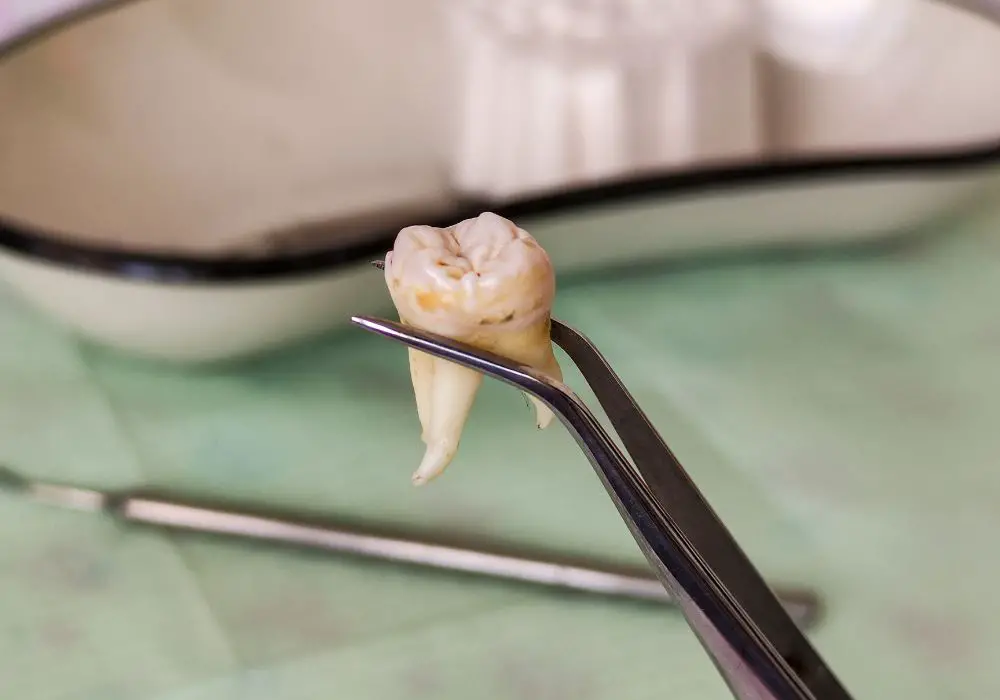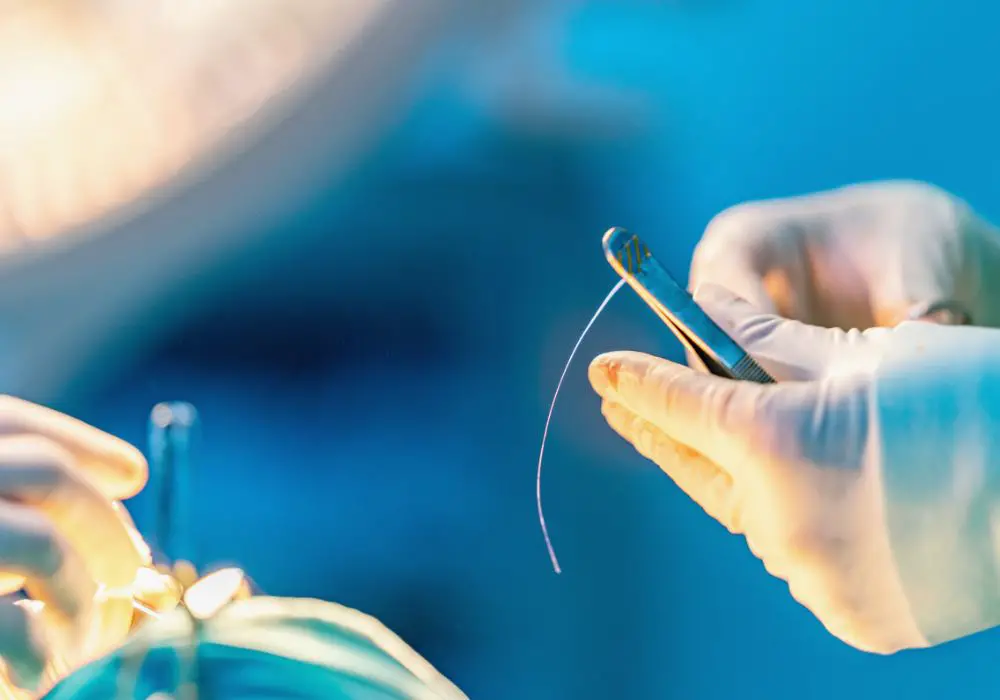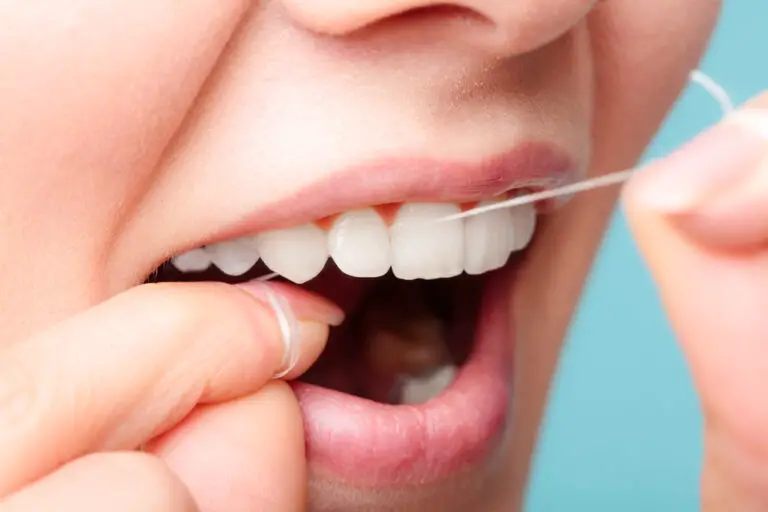If you’re scheduled to have your wisdom teeth removed, you may be wondering if stitches will be needed. Wisdom teeth removal usually involves an incision in the gum tissue to access the tooth, and stitches may be necessary to close the incision and promote healing. Stitches are also known as sutures, and they help to stabilize the cut gum tissue flap and keep it in place.
The need for stitches during wisdom teeth removal depends on several factors, including the position and size of the tooth, as well as the complexity of the extraction. If the tooth is fully erupted and easy to extract, stitches may not be necessary. However, if the tooth is impacted or difficult to remove, the dentist or oral surgeon may need to make a larger incision and use stitches to close the wound. The type of stitches used may vary, with some being dissolvable and others requiring removal after a few days. It’s important to follow your dentist’s aftercare instructions carefully to ensure proper healing after wisdom teeth removal.
Understanding Wisdom Teeth
When it comes to dental health, wisdom teeth, also known as third molars, are a common topic of discussion. These teeth are the last set of molars to emerge, typically between the ages of 17 and 25.
There are several reasons why wisdom teeth may need to be removed. One of the most common reasons is that there is not enough room in the mouth for them to grow properly. This can lead to a number of issues, including pain, infection, and damage to nearby teeth.
In some cases, wisdom teeth may grow in at an angle or become impacted, meaning they are unable to fully emerge from the gum line. This can also cause pain and infection, and may require the tooth to be removed.
It’s important to note that not everyone needs to have their wisdom teeth removed. Your dentist or oral surgeon will evaluate your individual situation and make a recommendation based on your specific needs.
If you do need to have your wisdom teeth removed, your dentist or oral surgeon will walk you through the process and answer any questions you may have. This may include discussing the use of stitches to promote healing after the procedure.
When is Stitches Required
Stitches, also known as sutures, are used after wisdom teeth extraction when an incision is made to remove the tooth. The stitches help to close the incision and promote healing. However, not all wisdom teeth extractions require stitches.
Here are some situations where stitches may be required:
- The tooth is impacted: If the wisdom tooth is impacted, meaning it is not fully erupted and is trapped beneath the gum line, the dentist or oral surgeon may need to make an incision to access the tooth. Stitches may be required to close the incision.
- The tooth is partially erupted: If the wisdom tooth has partially erupted, meaning it has broken through the gum line but not fully, the dentist or oral surgeon may need to make an incision to access the tooth. Stitches may be required to close the incision.
- The tooth is difficult to remove: If the wisdom tooth is difficult to remove, the dentist or oral surgeon may need to make an incision to access the tooth. Stitches may be required to close the incision.
It is important to follow the dentist or oral surgeon’s instructions regarding aftercare for the stitches. This may include avoiding certain foods, taking pain medication, and keeping the area clean to prevent infection.
If you experience any signs of infection, such as fever, swelling, or pus, contact your dentist or oral surgeon immediately. They may need to remove the stitches and prescribe antibiotics to treat the infection.
In summary, stitches may be required after wisdom teeth extraction in certain situations, such as when the tooth is impacted, partially erupted, or difficult to remove. It is important to follow aftercare instructions and contact your dentist or oral surgeon if you experience any signs of infection.
Procedure of Wisdom Teeth Surgery

If you need to have your wisdom teeth removed, it’s important to understand what the procedure entails. Here’s what you can expect during the surgery.
Pre-Surgery Preparation
Before your surgery, your oral surgeon will give you specific instructions to follow. You may be asked to avoid eating or drinking anything for a certain amount of time before your appointment. You may also need to arrange for someone to drive you home after the procedure, as you may still be feeling the effects of anesthesia.
During Surgery
During the procedure, your oral surgeon will make an incision in your gum tissue to access the impacted tooth. Depending on the tooth’s position, the surgeon may need to remove bone or cut the tooth into pieces to remove it. Once the tooth is removed, the surgeon will clean the area and may place stitches to close the incision.
The type of anesthesia used during the procedure will depend on the complexity of the surgery and your comfort level. Your surgeon may use local anesthesia to numb the area, or they may use sedation to help you relax.
Post-Surgery Care
After the surgery, you’ll need to take some time to recover. Your surgeon will give you specific instructions to follow, including how to care for the surgical site and what foods to eat. You may experience some pain and swelling, which can be managed with over-the-counter pain relievers or prescription medication.
It’s important to follow your surgeon’s instructions carefully to ensure a smooth recovery. You’ll need to avoid smoking, drinking through a straw, and eating hard or crunchy foods for several days after the surgery. You should also rinse your mouth with salt water regularly to promote healing.
In summary, wisdom teeth surgery is a common procedure that involves removing impacted wisdom teeth. By following your surgeon’s instructions carefully, you can ensure a smooth and comfortable recovery.
Alternatives to Stitches
In some cases, stitches may not be necessary after wisdom teeth removal. Your dentist or oral surgeon will determine whether stitches are needed based on the complexity of the extraction and your individual needs. Here are some alternatives to stitches that may be used:
Self-Dissolving Sutures
Self-dissolving sutures are made of materials that dissolve over time and do not require removal. These sutures are commonly used for wisdom teeth extractions and can help reduce the risk of infection and improve healing time.
Surgical Glue
Surgical glue is a liquid adhesive that can be used to seal the extraction site and promote healing. This alternative to stitches is often used for simple extractions and can provide a faster and more comfortable recovery.
Pressure Dressings
Pressure dressings can be used to help control bleeding and promote healing. These dressings are typically made of gauze or other absorbent materials and are applied to the extraction site after the procedure.
Laser Treatment
Laser treatment can be used to help promote healing and reduce the risk of infection. This alternative to stitches is often used for complex extractions and can provide a faster and more comfortable recovery.
Keep in mind that your dentist or oral surgeon will recommend the best option for your individual needs. It is important to follow all post-operative instructions to ensure proper healing and avoid complications.
Risks and Complications of Using Stitches

When it comes to wisdom teeth removal, stitches are often used to close the incision made in the gum tissue. While stitches are a common part of the procedure, there are some risks and complications that you should be aware of.
One of the most common risks associated with stitches is infection. If the wound becomes infected, it can delay the healing process and lead to more serious complications. Signs of infection include redness, swelling, and discharge from the wound.
Another risk associated with stitches is bleeding. While some bleeding is normal after the procedure, excessive bleeding can be a sign of a problem. If you experience bleeding that doesn’t stop or becomes heavy, you should contact your dentist or oral surgeon immediately.
In rare cases, stitches can become dislodged or break, which can cause the wound to reopen. This can lead to delayed healing and may require additional treatment.
It’s important to follow your dentist or oral surgeon’s instructions for caring for your stitches after the procedure. This may include avoiding certain foods or activities, keeping the wound clean, and taking medication as prescribed.
If you experience any complications or have concerns about your stitches, be sure to contact your dentist or oral surgeon right away. They can evaluate the wound and provide any necessary treatment to ensure a successful recovery.
Recovery and Healing Process
First Week Recovery
After your wisdom teeth extraction surgery, it is normal to experience some pain, swelling, and bleeding. The dental surgeon will usually place stitches to close the incisions made during the surgery. These stitches are usually removed after about a week. During the first week of recovery, you should follow the aftercare instructions provided by your dental surgeon to ensure proper healing.
Some tips for the first week of recovery include:
- Rest for the first 24 hours after surgery and avoid any strenuous physical activity.
- Apply ice packs to the affected area to reduce swelling.
- Take pain medication as prescribed by your dental surgeon.
- Eat soft foods and avoid hard or crunchy foods that may irritate the surgical site.
- Rinse your mouth gently with warm salt water to promote healing and prevent infection.
Long Term Healing
While the first week of recovery is crucial, the healing process for wisdom teeth extraction can take several weeks to months. During this time, it is important to continue following the aftercare instructions provided by your dental surgeon to ensure proper healing.
Some tips for long term healing include:
- Continue to eat soft foods for the first few days after surgery and gradually introduce harder foods as your mouth heals.
- Brush and floss your teeth gently, avoiding the surgical site.
- Avoid smoking and using tobacco products, as they can delay healing and increase the risk of infection.
- Attend all follow-up appointments with your dental surgeon to monitor your healing progress.
- If you experience any unusual symptoms, such as excessive bleeding or severe pain, contact your dental surgeon immediately.
By following these tips and taking good care of yourself during the recovery and healing process, you can ensure a smooth and successful recovery from wisdom teeth extraction surgery.
Preventing Dry Socket

After wisdom teeth extraction, one of the most common complications is dry socket. This condition occurs when the blood clot that forms in the socket where the tooth was removed becomes dislodged or dissolves before the wound has healed. This can cause intense pain and delay the healing process.
To prevent dry socket, it’s important to follow your dentist’s instructions carefully. Here are some tips that may help:
- Avoid using straws: The suction created by using a straw can dislodge the blood clot, so try to avoid using straws for at least a week after your extraction.
- Don’t smoke: Smoking can also increase your risk of dry socket. If you smoke, try to quit or at least wait a few days after your extraction before smoking again.
- Be gentle with your mouth: Avoid rinsing your mouth vigorously or spitting forcefully, as this can also dislodge the blood clot. Instead, rinse your mouth gently with salt water as directed by your dentist.
- Take pain medication as prescribed: If your dentist has prescribed pain medication, be sure to take it as directed. This can help reduce pain and inflammation, which can also help prevent dry socket.
By following these tips, you can help reduce your risk of developing dry socket after wisdom teeth extraction. If you do experience symptoms such as severe pain or bad breath, be sure to contact your dentist right away. They can provide additional treatment to help manage your symptoms and promote healing.
When to Contact Your Dentist
After wisdom teeth extraction, it is normal to experience some discomfort and swelling. However, if you notice any of the following symptoms, it is important to contact your dentist:
- Excessive bleeding that does not stop after applying pressure for 30 minutes
- Fever or chills
- Severe pain that is not relieved by pain medication
- Pus or discharge from the extraction site
- Numbness or tingling in your lips, tongue, or chin
If you have any concerns or questions about your recovery, do not hesitate to contact your dentist. They can provide guidance on how to manage your symptoms and ensure that you are healing properly.
It is also important to follow your dentist’s aftercare instructions carefully to promote proper healing and avoid complications. This may include avoiding certain foods, taking medication as prescribed, and practicing good oral hygiene.
Remember, every person’s recovery process is different, so it is important to listen to your body and seek help if you are experiencing any unusual symptoms. Your dentist is there to support you throughout your recovery journey.
Frequently Asked Questions
Do you always get stitches after tooth extraction?
Not always. The need for stitches after tooth extraction depends on the complexity of the extraction and the size of the wound. Simple extractions may not require stitches, while more complex extractions, such as wisdom teeth removal, may require stitches to close the wound and promote healing.
How long does it take for stitches to dissolve in mouth after tooth extraction?
The time it takes for stitches to dissolve in the mouth after tooth extraction varies depending on the type of stitches used. Dissolvable stitches usually take around one to two weeks to dissolve, while non-dissolvable stitches need to be removed by a dentist or oral surgeon after about one to two weeks.
How many stitches for tooth extraction?
The number of stitches needed for tooth extraction depends on the size and location of the wound. Simple extractions may only require one or two stitches, while more complex extractions may require several stitches to close the wound and promote proper healing.
Wisdom teeth stitches came out after 1 day
If your wisdom teeth stitches come out after only one day, it is important to contact your dentist or oral surgeon immediately. This may be a sign of a problem with the wound, and your dentist or oral surgeon may need to re-stitch the wound to promote proper healing.
How long does it take for wisdom teeth to heal with stitches?
The time it takes for wisdom teeth to heal with stitches varies depending on the complexity of the extraction and the size of the wound. In general, it can take anywhere from a few days to several weeks for the wound to fully heal.
Do stitches reduce risk of dry socket?
Yes, stitches can help reduce the risk of dry socket, a painful condition that can occur after tooth extraction. Stitches help to keep the blood clot in place, which is important for proper healing and to prevent dry socket from occurring.






